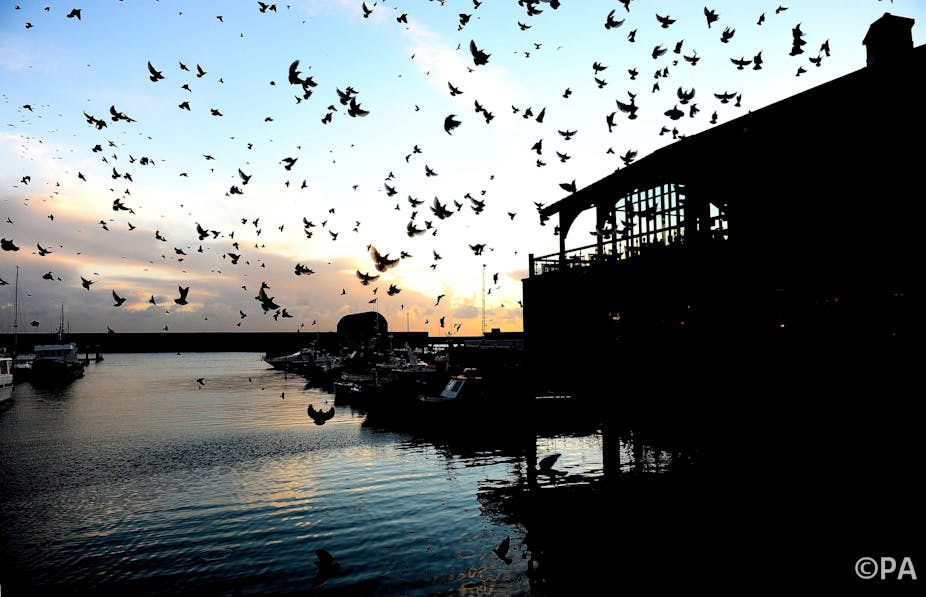BirdLife International’s State of the World’s Birds report hopes to demonstrate an urgent need for funding, advocacy, conservation action and monitoring to halt the global loss of birds and other wildlife.
The report is a conservation message-in-a-bottle, detailing or at least mentioning just about every significant topic in modern conservation science. Most striking is the cost of conserving the world’s important biodiversity – estimated at US$80 billion, that is one twentieth of global military spending, around 0.1% of the total global economy and, most remarkable of all, one fifth of what we spend on soft drinks every year.
A premise of the report is that birds are good indicators of the health of our planet’s biodiversity. In effect, by concentrating on birds, we can identify patterns or trends in other species. Mapping those places where birds are prevalent alongside other groups such as amphibians can mark areas ripe for conservation.
But the proportion of threatened bird species for which we have hard data to estimate population size and trends, or a clear idea of how they react to environmental changes, is tiny. This can make analysing global threats or schemes such as Red List Indicators somewhat subjective, and that makes the already difficult task of prioritising precious conservation resources even harder.
It may be relatively easy to make a list of the threats a particular species or region faces – but it is more difficult to identify the most immediate dangers.
If we protect the few, do the many suffer?
BirdLife International remains mainly focused on birds with tiny ranges or which are close to extinction, but over the past decade it has broadened the scope of its work. Importantly, there is now increasing recognition of the importance of common birds – seed dispersers and pollinators vital to ecosystem function, the insect-eaters and their role in pest control, and species of beauty and tradition. Even so, there is an argument that we have been too slow off the mark caring for common tropical birds and the function they play in maintaining ecosystems – and the crucial link between wildlife and people.
The bulk of the imaginary US$80 billion that BirdLife hope to raise would go toward protecting Important Bird Area (IBAs), a set of 12,000 or so relatively small areas of the world which are disproportionately important for birds. Spread unevenly across the globe, these are mostly the single areas in the world where particular species are found such as islands or mountains, or the last strongholds of threatened species or habitats.

The identification by BirdLife of small and discrete areas for protection is a bold approach – not least because it infers that areas outside the perimeter of these sites may be less well cared for. Simply designating IBAs as National Parks, or one of the many other forms of official protection does not necessarily offer adequate protection for their wildlife. The world is full of “paper parks” – reserves which look good when shaded green on maps, but which in reality are utterly dysfunctional through lack of funds, staffing, expertise, direction, or the will to protect wildlife from poaching and trees from illegal logging. It is important that BirdLife’ US$80 billion is spent more wisely than conservation cash has been in the past 30 years.
Drawing lines in the sand isn’t enough
Linked to the above, this report seems to suggest that we can have it both ways as conservationists. On one hand, we can pay for the setting aside of land within IBAs as protected areas. But it also advocates sympathetic management of agricultural land and other “human-dominated” landscapes outside of traditionally protected areas to improve their biodiversity. Can we have both and still feed and supply soft drinks to the world’s growing human population? Most think we cannot, and determining which model we choose is one of the most important and exciting debates in conservation science today.
We can design landscapes which represent an optimal balance between food production and nature conservation, but intelligently designed landscapes, no doubt with protected areas embedded in them, require human cooperation. Of course, it gives us strength to unite as conservationists against the palm oil industry – but the sooner we find common ground with this and other industries such as mining, the better it will be for birds across the globe.
It is important not to forget the huge task of increasing awareness of biodiversity among the world’s people. BirdLife and its partners have been very active in building and maintaining connections between birds and people - promoting the growth of birdwatching clubs in China, schoolchildren’s pride in their native parrot species, or helping local people benefit from the ecosystems their lands provide.
The importance of such connections cannot be underestimated. Would more of the planet’s seven billion people prefer to live in a world without birds, or without soft drinks? Arguably, the answer will be driven just as much by what conservationists do in cities, farms and schools in developing countries as how well we protect threatened birds in the world’s Important Bird Areas.
BBC Nature - Birds “show value of conservation investments”

